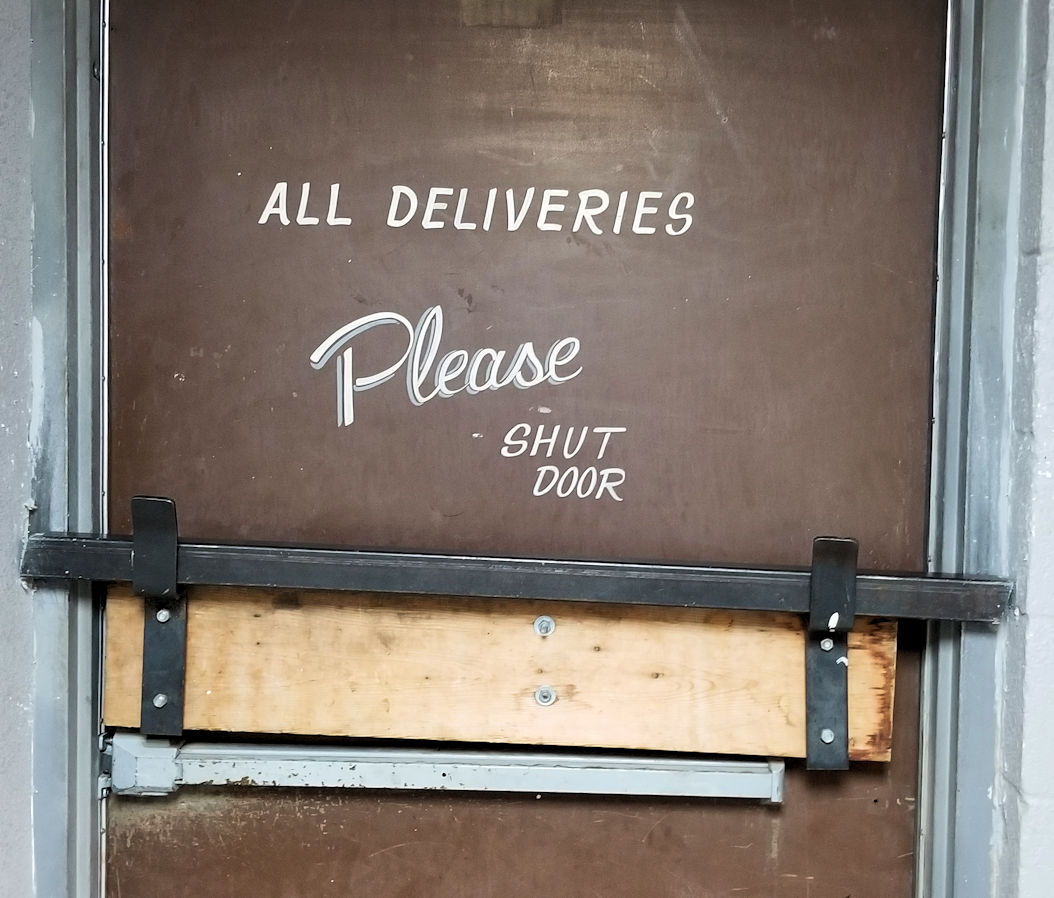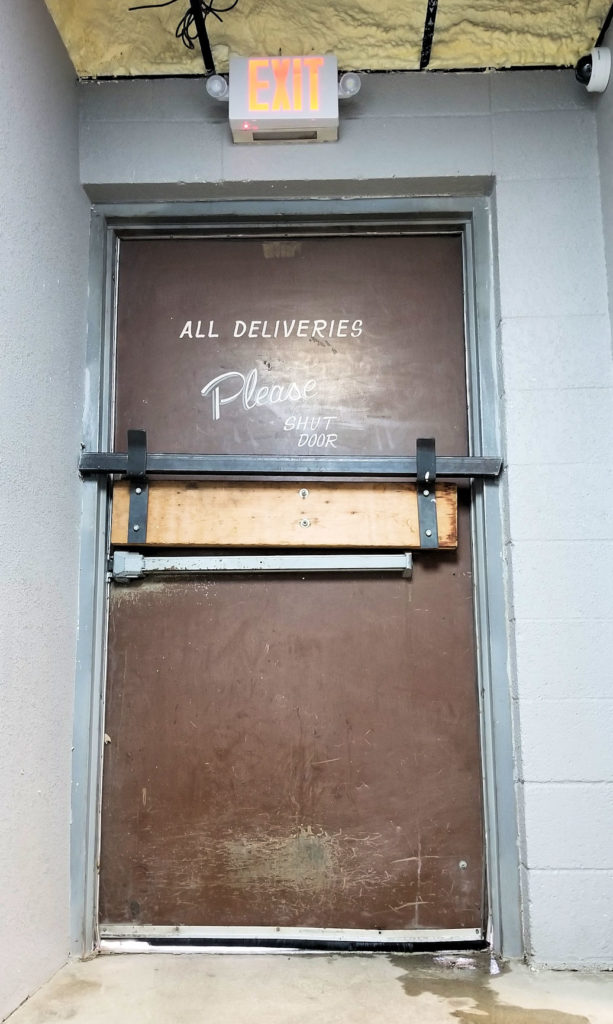I have heard people say that it’s ok to lock doors with non-code-compliant locking methods when the building is not occupied. I never recommend this practice, since these security devices always seem to end up being used when the building IS occupied. The door in these photos is at the top of the stairs in a bar, exiting from a non-sprinkled basement assembly room that is used for weddings and parties. The occupant load is at least 150 people.
What do you think? OK (for after-hours) or NO WAY?
Thank you to Dave Cox, Fire Marshal/Deputy Chief of the Brainerd Fire Department for today’s Fixed-it Friday photos!
You need to login or register to bookmark/favorite this content.








NO way. Codes were developed to help avoid tragic events from occurring.
Not good, not sure,
If the panic hardware works,
And if it does can someone push it to open??
Fix the door
Is that to prevent “Run away Groom??”
The Original… Arm-A-Dor!
I vote no. IBC 1008.1.9.11 (Stairway Doors), IBC 403.5.3 (Stairway Door Operation) and/or IFC and/or 1010.1.9.12.
I’m curious. Was there another means of egress? If the door is an egress from the basement, I don’t see how it could be barricaded from the inside if there wasn’t another exit.
Good detective work, David! I’m sure there was another exit because otherwise how did the barricader get out, but two exits are required for that occupant load, so this is a required exit that has to comply with the codes.
– Lori
can we talk about the exposed spray foam insulation on the ceiling, too?
It’s close. It’s not a Code approved exit device. It can be released in single operation. It’s not self-latching (but that’s a only a fire-door requirement – I assume this opening is in the exterior wall and not fire rated. It does project too far into the opening when it’s open. Can’t figure out what that gray thing is under it, though. 😉
Absolutely, Positively, No Way in Hell would I allow this….under NO circumstances….no matter how many times they complain about it. This is not interpreting the code… This is flat out, waiting for something to happen because you know SOMEONE is going to FORGET to unlock the door before the bar opens.
Given that bigger, better code compliant hardware is available to address security concerns, no.
I’d like to play devil’s advocate for just a minute and current codes aside and only looking at it from a safety perspective. This door has been beat to HE**–from the outside trying to get in. I do believe that allowing for special circumstances on a case by case basis to allow for a variance of when the building is unoccupied isn’t unreasonable. I’m not sure if some jerry-rigged medieval barricade is the answer, but I would be okay with a second locking device used for after hours only. Perhaps I would rather see something like shutters used for gun or liquor store windows used to better guarantee that it is only used when the building is unoccupied.
Even if the barricade wasn’t on the door, I don’t believe the ED is complaint since it doesn’t extend the proper width of the door leaf. Am I mistaken?
Hi Darrell –
With this exit device design, the touchpad is almost the full width of the device, so it is ok because it measures more than 1/2 the width of the door. With many types of panic hardware, the touchpad is shorter than the device, but not in this case.
– Lori
I’m gonna go with this is a terrible idea. That said….
If the panic bar is broken and doesn’t actually latch, I suppose you could argue that lifting the HSS tube is one operation…
I deal with a lot of retail work where a thumb turn or even keyed interior lock is allowable when the building is only occupied by staff. If there are persistent breakins here, I can see a not entirely horrible argument that this is a similar situation. I don’t like it, but as a “the last manager out the front door sets that in place” kinda thing, it’s a LOT better than an interior keyed core, provided there’s a secondary egress.